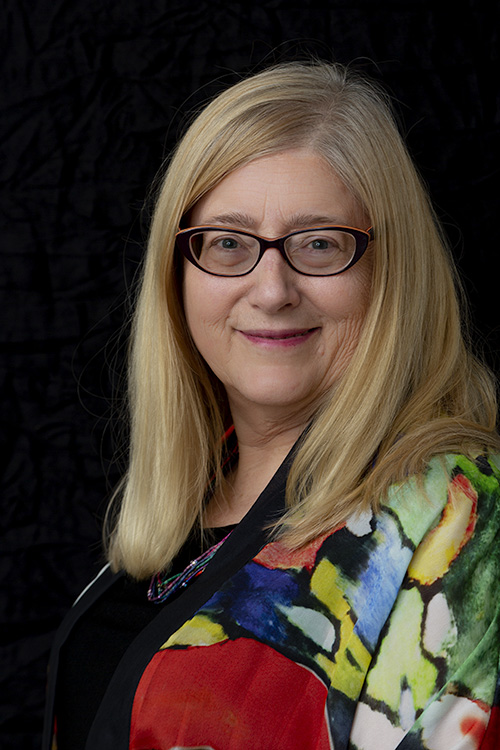3 Steps to Push Back on Medical Ageism
When my mother trained in the Cadet Nursing Corps during World War II, the young nurses were taught that physicians could do no wrong. But, paradoxically, if a doctor made a mistake, it was the nurses’ duty to cover for the doctor. Mom worked in the obstetrics ward of our local hospital when I was a child and came home with stories of doctors who stayed too long on the golf course when called to a difficult birth, or who mishandled forceps and damaged a baby during delivery.
Nevertheless, as a young woman I shared the common belief that doctors were demigods whose judgement was not to be questioned. Over the course of decades, through personal experience and by reading about medical bias, I came to realize that physicians are just as fallible as anyone else. Physicians, like scientists, are trained in a set of objective problem solving tools but bring unconscious biases to their work. As a woman, I have experienced firsthand the sexism inherent in medicine. As the mother of a disabled adult, I’ve witnessed ableism in healthcare. Weightism in clinical care is well documented. And as a biotechnology professional for four decades, I saw evidence that clinical research is biased in favor of whites. And when a patient is part of several marginalized communities, the bias can be much greater.
In my sixties I began to experience age bias in healthcare when my symptoms and concerns were dismissed. I decided to develop tools to enable the physician and me to focus on the issues at hand and sidestep gendered ageism. My goal was to create a team approach. I’d like to share with you the method that has worked for me, in the belief that you will find some of these ideas helpful.
3 Steps to Push Back – Step 1: Self-Education
Consult reputable sources to learn about a medical issue before visiting your physician. Questions to consider include:
- What causes this condition?
- What are common symptoms?
- What are treatment options for this condition, including pluses and minuses of each?
- What is the prognosis?
- What can I do at home to lessen the impact of this medical issue?
Some physicians complain about patients who consult “Dr. Google” before coming to see them. However, recent studies have shown that when patients inform themselves by reading reliable online materials, their interactions with healthcare professionals are more productive.
3 Steps to Push Back – Step 2: In God We Trust, All Others Bring Data
Not every health complaint can be documented by home data. But when it is possible to bring data to a medical visit, that’s a great way to focus the doctor’s attention on the issue at hand. Here are examples of ways to collect data:
- Apple Watch: Your watch can collect data about AFIB, heart rate at rest and in motion, and blood oxygen. All this data can be exported, shared with your doctor, or printed to bring to an appointment.
- O2 Meter: This is an inexpensive device that slips over the finger and measures the level of oxygen in the blood. Many of us purchased these during the pandemic, and they remain a reliable way of determining whether a respiratory infection is interfering with oxygen levels.
- Blood Pressure Cuff: If you, like me, have “White Coat Syndrome,” and your blood pressure goes up the minute you walk into the doctor’s office, take your blood pressure at home in the morning before your visit and photograph the results. If blood pressure is not the issue you want to discuss, don’t allow your appointment to veer off in an unproductive direction.
3 Steps to Push Back – Step 3: Medical Summary Sheet
I prepare a summary ahead of each office visit including relevant history and questions for the doctor. This sheet accomplishes several things:
- It focuses the conversation on the issue(s) I want to discuss
- It demonstrates my baseline knowledge about the issue(s)
- It ensures that my questions will be addressed
- It ensures that, even if I bring someone to my appointment, the conversation will be between me and the healthcare provider.
And if a doctor is under time pressure, the Summary Sheet supports an efficient use of the available time.
Here is a worksheet you can complete with information about your healthcare issue. The bullet points are suggestions—you may want to make different points or ask different questions.
(Your Name) Medical Appointment for (Date) * Potentially Relevant History * (Medication allergies or hypersensitivities) * (Preexisting conditions you have that may be relevant) * (When the current medical issue began and how symptoms have changed over time) * (Any medications or other treatments so far) * (Steps you are currently taking to manage the condition). Questions * (Question about causes of the condition) * (Question about current medication dosages to treat the condition) * (Question about other possible medications) * (Question about other treatment options and next steps) * (Question about prognosis).
Print two copies of your Summary Sheet. When you go to your appointment, bring a clipboard with both copies of your sheet, and a pen. Give one copy to the physician and hang onto the other (If there are two doctors in the room, they can share). Take notes on your copy—there may be aspects of your medical issue that you did not anticipate.
If the doctor talks down to you or exhibits other signs of ageism, don’t bite. If the doctor says this issue is to be expected at your age, say “I’d like to review my history and treatment options.” If the doctor leaves the room without finishing the review of your history and addressing your questions, follow them down the hall and keep asking.
On the other hand, you may have the experience I had at a recent appointment: Your physician may thank you for being so “health aware” and ask if they can keep their copy of the Summary Sheet to simplify documenting the visit.
Final Thoughts
This method works well when you are able to advocate for yourself. At some point we may develop medical conditions where self-advocacy is not possible. So please consider this additional step: Explain this method to the person(s) designated to advocate for you in a medical setting in the event of your incapacity, and ask them to use this approach as well.
Although the practice of medicine is conducted by fallible human beings, we can facilitate a team approach to problem solving by educating ourselves, collecting data, and providing a succinct summary of relevant history and questions. This method supports a team approach, where busy physicians and older patients work together efficiently and effectively to address medical issues.
Wishing you, and all of us, the best of luck dealing with the medical profession. And, as they say, luck favors the prepared mind.



7 Responses
Hi Stella,
I strongly believe in self advocacy. It saved my life twice. A mammogram missed my breast cancer, and a doctor missed it also. I had to be persistent and keep being the “squeaky wheel” until doctors listened to me. I fired many doctors and selected my team, who respected my medical decisions. It is not always easy; in fact, as you know it’s very difficult, but so worthwhile. I love your worksheet suggestion. Having the doctor and the patient working on this worksheet together is so helpful. Thank you for sharing this important information.
I also wrote a book on this based on my experience and offering advice to handling the difficult-to-navigate health system. It’s called Calling the Shots in Your Medical Care.
You are right: there does come a point when we can no longer advocate for ourselves. It’s important to try having a trusted friend, relative, etc. to advocate for us.
Thank you, Beth, for your kind comments. And brava you for being such a terrific self-advocate!
Cheers,
Stella
I think it IS a racket. Google “The Bone Disease That Grew To Fit the Prescription.” The Merck Drug Company established the guidelines to expand the drug and an NPR investigation revealed the truth. I have never had a bone density test.
1. went on Alendronate for bone density loss. -3.11 in one hip and the only is -2.10 ish. The doc went on and on about the risk of fracture. I think she said it was something like a 10-20% by age 85. I am 75 now.
This September will be 2 yrs since I started it. I am so tempted to go off of this. It seems like such a racket.
2. Someone mentioned switching to a plant based diet for asthma. I am curious which foods may trigger it.
3. I also have GERD now. Had my esophagus dilated (torn actually) which helped for a year. I cough more and more and I am not sure if it is a GERD cough or asthmatic cough. I do not trust doc’s on these issues anymore.
Jane, I’m sorry to hear of your health issues. Reading a variety of peer reviewed medical articles can help us partner better with our medical providers. Wishing you all the best.
Very helpful, Stella. How do we know if the online resources we find are “reliable?”
Great question, Wendy!
I look for peer reviewed medical journals such as the New England Journal of Medicine. Other reliable sources include the Mayo Clinic and the Tufts University medical newsletter.
I stay away from websites that are selling pharmaceuticals or other medical products.
And even with peer reviewed sources, it’s important to use our critical faculties and evaluate what we read.